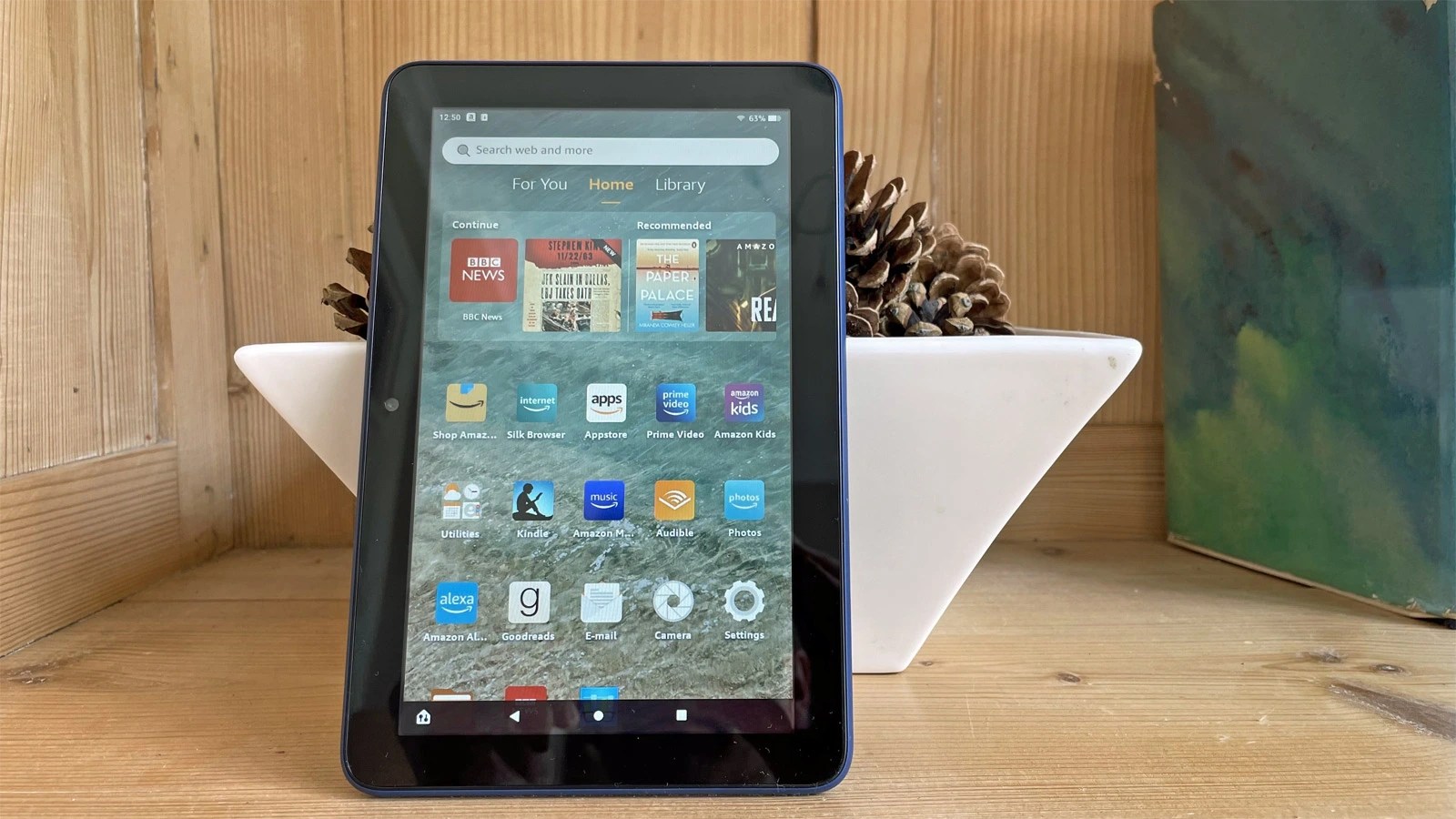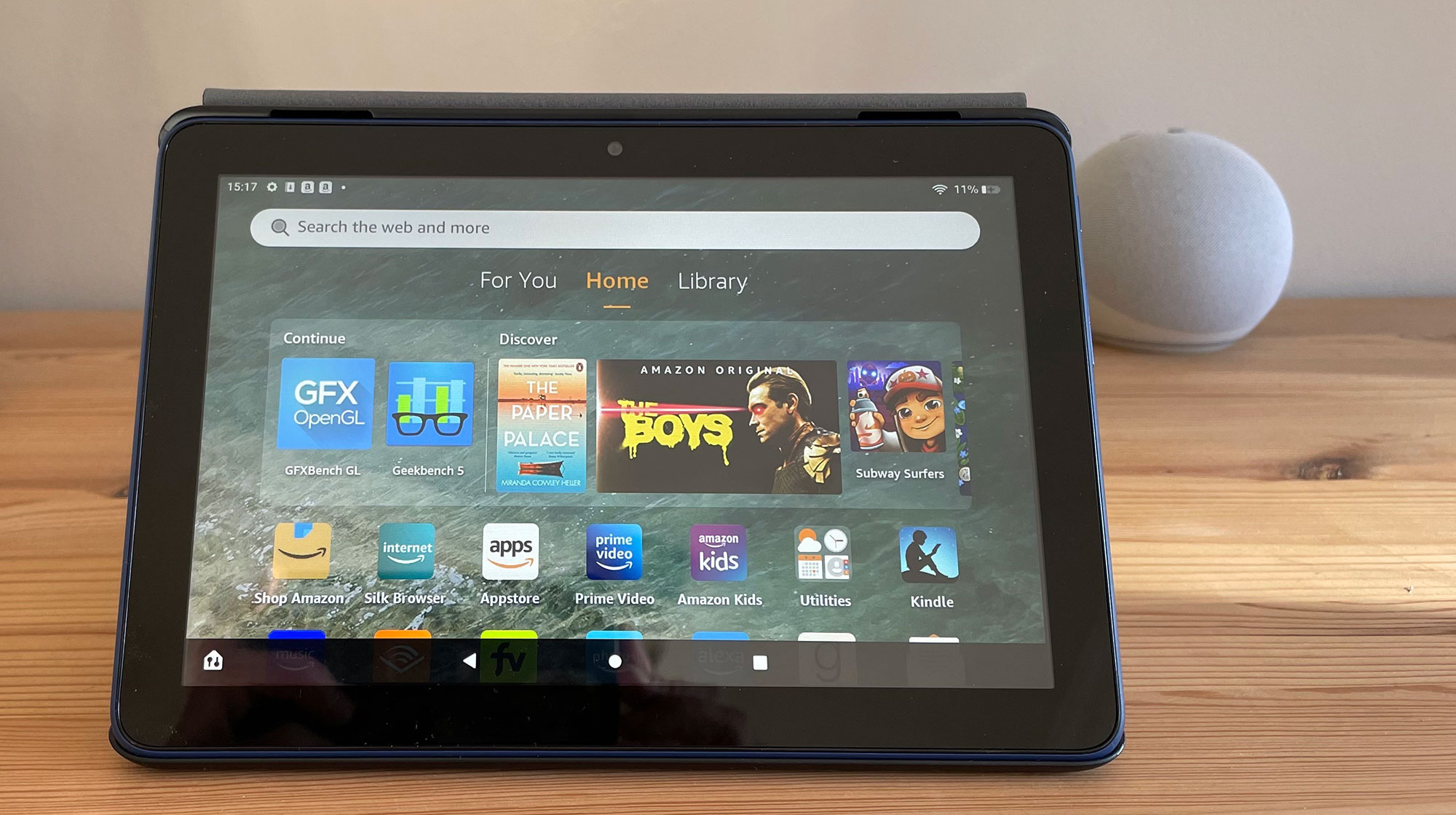There are plenty of tablets to choose from in 2023, particularly if you’re happy with an Android slate.
However, they nearly all have one thing in common: a large display. It’s a key selling point for many tablets, but sometimes you don’t need a laptop-sized screen in your hands.
That’s where mini tablets come in. Defined here as displays of around 7-9in, they strike a good balance between screen size and portability. If you’re looking for a device that’s larger than big phones yet small enough to comfortably hold, you’ve come to the right place.
There aren’t that many devices to choose from in 2023, but you’ll still find 10 solid options in the list below. They’re ranked, but you might find that something lower in the list works best for you.
You may also be interested in our separate articles on the best overall tablets and the best cheap tablets for more options. Also, see detailed buying advice in the FAQ section at the bottom of the page.
Best small tablet 2023
1. Apple iPad Mini (2021) – Best overall

Pros
- Compact design
- Apple Pencil support
- Superb performance
Cons
- A little pricey
- No Magic Keyboard support
The sixth-gen iPad Mini ditches the old form factor for something more akin to the latest iPad Air and Pro ranges; with an angular design, stereo speakers, Centre Stage technology and much smaller bezels than before.
The Mini’s 60Hz display has jumped to 8.3in, but without changing the physical size of the tablet – allowing for more display real estate without affecting the Mini’s portable nature. It’s a gorgeous display too, with the highest pixel density of any iPad, even if it is a bit on the small side for true split-screen multitasking.
It’s powered by the same A15 Bionic silicon as the iPhone 13 range, with plenty of power for all you might want to do on the tablet.
The Touch ID sensor has been moved to the Power button – like with the iPad Air – and there’s support for the second-gen Apple Pencil to boot. However, the lack of a Smart Connector on the rear means that it doesn’t have its own Magic Keyboard; a real boon for the iPad Air and Pro ranges, and the only real chink in the Mini’s armour.
2. Apple iPad Mini (2019) – Still brilliant

Pros
- Premium materials
- Apple Pencil support
Cons
- Ageing design
- Ageing hardware
Until Apple finally decided to refresh the iPad Mini for 2021, the 2019 model was still the best small tablet on the scene, meaning it’s still a great tablet, despite having finally, officially been replaced by Apple.
With the A12 processor at an affordable base price, the 2019 Mini is still a tiny powerhouse of a slate.
Yes, the design is seven years old but with the addition of Apple Pencil compatibility, ongoing OS updates from Apple and decent battery life, even this older Mini proves not everyone wants or needs to spend thousands on an iPad Pro.
3. Realme Pad Mini – Affordable stock Android

Pros
- Premium, compact design
- Great battery life
- Affordable
Cons
- Poor cameras
- Slow charging
- Limited update support
Most established Android tablet makers decide against making smaller slates, leaving it to newer companies such as Realme to fill the void.
The Chinese company launched its first ever tablet (the Realme Pad) in late 2021, but followed it with a mini version soon after. This 8.7in device features a surprisingly premium design, despite its low price.
With battery life and a clean user experience, this is a great slate for basic media consumption, basic productivity tasks and reading eBooks. However, its low-resolution display and mediocre performance hold it back from being an instant recommendation.
It’s also difficult to get a hold of in the UK, though you can usually import one from mainland Europe.
4. Amazon Fire HD 8 Plus (2020) – Best for kids

Pros
- Hands-free Alexa
- Improved battery life
Cons
- Entry-level performance
- Limited selection of apps
Amazon refreshed its 8in Fire tablet for 2020, with more memory and wireless charging, which in turn enables Amazon Echo Show mode; so you can summon Alexa and check the weather with your voice.
While performance isn’t markedly different from the previous Fire HD 8, this model will last longer and we’d say the addition of the wireless charging dock is wholly worthwhile if you’re considering picking one of these slates up.
5. Amazon Fire 7 (2022) – Most portable

Pros
- Very affordable
- Upgraded USB-C connectivity
- Decent battery life
Cons
- Sluggish performance
- Poor camera quality
- Low-resolution display
The Amazon Fire 7 may not offer much in the way of improvements over its predecessor – but it’s still an undeniable bargain all the same.
Highlights include a 30% bump in performance, an increase in overall battery life and the switch to USB-C for connectivity, which might not seem like much, but considering the other sorts of tablets you can expect to pick up at this price point/size, there’s little else out there that comes close to consideration.
New features aside, it’s the same solid Amazon-inspired Fire OS 8 experience, primarily tailored around Amazon’s services and apps. There are popular third-party apps including Spotify and Netflix, but don’t expect the same swathe of apps as you’ll find in Google Play – including YouTube, rather frustratingly.
6. Samsung Galaxy Tab Active 3 – Hardiest design

Pros
- Well protected against the elements
- Removable battery
- S Pen support
Cons
- Chunky build
- Niche appeal
- Pricey
Outside of the business use cases it was built for, the Galaxy Tab Active 3 only offers niche appeal to the general consumer, but it’s hard to overlook the value of a hardy, ruggedised tablet with a removable battery, all the same.
With military-grade protection and IP68 water and dust resistance, the Tab Active 3 can withstand submersion in sand, water and drops from 1.5m. There’s even a setting that means you can use the touchscreen with gloves on, while the S Pen offers a useful alternative for navigation and productivity.
You pay a premium for such a hardy slate but if that’s a feature of importance, nothing else on this list can match the Tab Active 3.
7. Amazon Fire HD 8 (2022)

Pros
- Affordable
- Hands-free Alexa
- Headphone jack and expandable storage
Cons
- Mediocre performance
- Limited app selection
- Poor cameras
Not too long ago, the HD 8 was the best option in Amazon’s Fire tablet range. That’s no longer the case after an underwhelming 2022 upgrade, but it’s still worth considering for some people.
For under $100/£100 (provided you don’t mind ads), it still offers a decent tablet experience – especially if you’re invested in the Amazon ecosystem. Alongside the likes of Prime Video, Kindle and Amazon Music, you also get hands-free Alexa, which is a real highlight.
Sadly, the third-party app selection is underwhelming, especially if you rely on a tablet for online banking or controlling smart home tech. Alongside underpowered performance and disappointing cameras, the Fire HD 8 is lacking in several key areas.
However, it may still be of value if you’re just looking for a small tablet that handles the basics.
FAQ
Which small tablet is best for students?
When it comes to tablets for school, college and university, it’ll depend on a few factors – how portable it is, the accessories you’ll use and the apps you’ll need to access.
While some big-screen tablets like the iPad Air offer compatibility with Apple’s laptop-esque Magic Keyboard, the same can’t be said for the Mini – though there are plenty of third-party accessories looking to fill that gap.
The biggest factor will likely be the apps you’ll use on a day-to-day basis. While most big school-focused apps like Microsoft Office are available across iOS and Android, there are some exclusive to either platform.
Apple’s App Store has more tablet-optimised apps than Google Play, and it offers compatibility with the Apple Pencil for enhanced note-taking, which makes the iPad mini the ideal small-screen tablet for students in most scenarios.
Are iPads better than Android tablets?
This is a tough one to answer, as it very much depends on individual use cases. For existing iPhone users, the iPad is the smart choice; it’ll sync apps, photos, messages and other data between your devices using iCloud, and you can even send texts and make calls if you’ve got a connected iPhone nearby.
When it comes to Android users, the choice is a little tougher. The iPad is still a strong competitor, especially in the small tablet market where there frankly isn’t a lot of Android competition, but there has been a resurgence of decent small-screen Android tablets recently. The issue is that small-screen Android tablets are still usually budget-focused, unlike Apple’s iPad range, which targets a higher quality overall experience, often at the cost of the latest hardware available.
So, while high-end Android tablets make a good iPad competitor, iPads generally rule the small-screen tablet market unless you’re simply looking for a budget tablet for web browsing.
Is a 7in tablet big enough for my needs?
There’s no yes or no answer to this question – it’ll again depend on what you plan to use the tablet for.
For standard browsing, gaming, and word processing, a 7in tablet may well be good enough for your needs. However, if you plan on editing photos and videos, undertaking other creative work or using it as a replacement for a TV for Netflix binges, you might want to opt for something a little larger.
Of course, the biggest benefit of a small-screen tablet is portability. Small screen tablets are much easier to transport than larger tablets, making them ideal for use at work or at school.
